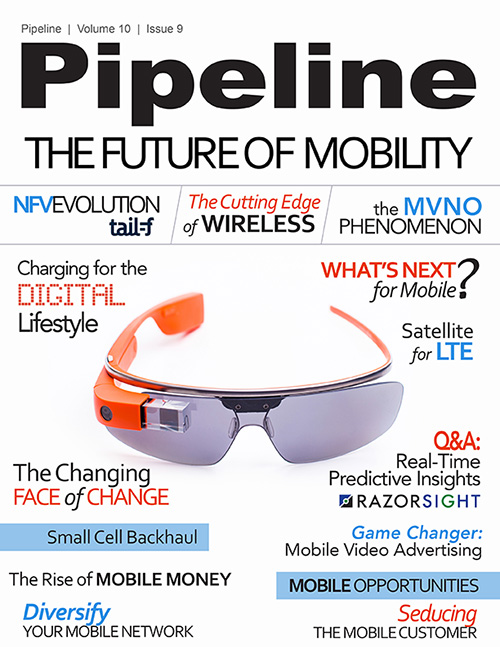The Cutting Edge of Wireless
Other novel products include ski goggles with a Predator-style heads-up display, a smartwig that offers GPS navigation, and a ring with an embedded NFC chip that can be used for payments, loyalty tracking, event access, and more. Still, this is just the tip of the iceberg. From manufacturing and assembly to training, applications for heads-up displays are countless, as are wearable devices for law enforcement, field technicians, and more. The future is all about integrating wireless into daily life in a seamless manner and reducing the time it takes to access important data. Just as they have with connected cars and smart home suites, service providers should build business cases around wearable technology now, while the market is in its infancy.
Wireless sensor networking
Wireless sensor networking (WSN) is the underlying story of the internet of things. WSN encapsulates machine-to-machine (M2M) computing, but is distinct. According to Susan Eustis, WinterGreen Research, "Wireless sensor network markets are evolving as smart phone devices and technology find more uses throughout the landscape of the Internet of Things. Sensors can provide monitoring that has not previously been available. Differential diagnostic tools support provide differential information that helps manage our daily lives from traffic patterns to crime detections, to medical treatment."
Libelium, a manufacturer of wireless sensors, lists the top 50 applications for wireless sensors across categories including smart cities, smart environment, retail, logistics, and industrial control. (The list is summarized by this helpful infographic.)
Authentication and security are crucial for many of these devices, especially in healthcare, banking, public safety and business use. Service providers are well-positioned to offer these capabilities as part of a branded sensor networking suite, such as a manufacturing efficiency offering, or a field service support product that bundles asset tracking, videoconferencing, and sensor networking. Quality of service is another metric that can be monetized.
One of the most interesting developments in wireless technology is the discovery that ambient radio frequencies can be harnessed to power devices and can be used as a communication medium. The first capability is referred to as energy harvesting. Energy harvesting technology will rapidly accelerate the deployment of wireless sensor networks and wearable devices. Using existing radio frequencies to communicate is called ambient backscatter networking.
Research into this cutting edge technology is underway at the University of Washington. Shyam Gollakota, lead researcher and UW assistant professor, wrote that the technology is “hopefully going to have applications in a number of areas including wearable computing, smart homes and self-sustaining sensor networks.”
“Our devices form a network out of thin air,” added co-researcher and UW assistant professor Joshua Smith. “You can reflect these signals slightly to create a Morse code of communication between battery-free devices.”
Now it’s important to note that this form of networking isn’t breaking any bandwidth records. In fact, it so far has only achieved 1 kbps transfer rates. But it doesn’t need to be faster for most sensor-based applications. In this video, for example, the researchers demonstrate power-free payment processing using the technology.





















